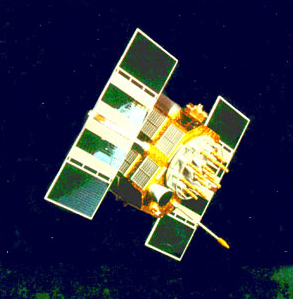When Albert Einstein said, "the only reason for time is so that everything doesn't happen at once," he didn't know about studies performed by Senior Research Associate Christine Hackman and Fellow Judah Levine. These time-and-frequency experts work quite hard to devise ways of comparing the accuracy and stability of the world's premier atomic clocks - so that things like satellite communications and high-tech navigation can happen precisely when they're supposed to, including all at once.
Today's cesium fountain atomic clocks are accurate to one to two parts in 1,000,000,000,000,000. Hackman and Levine's frequency comparison methods are three to four times more accurate than the clocks themselves. That's precision measurement on a scale few of us have even dreamed of. And, it's good enough for comparing the frequencies of the best cesium fountain clocks around the world. The ongoing challenge is that even their best efforts aren't yet precise enough to examine the performance of a new generation of optical atomic clocks already under development.
Researchers at NIST and JILA use two techniques for comparing the accuracy and stability of atomic clocks in different locations. The first technique, called "two-way satellite time/frequency transfer," uses commercial broadcast satellites to exchange data between two sites with atomic clocks. The second technique (investigated by Hackman and Levine) uses measurements of the phase of the radio-frequency carrier waves transmitted by Global Positioning System (GPS) satellites (shown above). By comparing the GPS measurements at the two sites, the researchers evaluate the frequencies of the two clocks. Antennas used to communicate with both GPS and commercial broadcast satellites are installed on the roof of NIST's Boulder facility; some GPS antennas are shown below.
The GPS technique is much more cost effective than the two-way satellite technique because users don't have to transmit signals up to the satellites or pay to receive the signals. However, it has the disadvantage that data can only be processed in batches of 1-5 days. Discontinuities, or jumps, often appear between the end of one data set and the beginning of the next. Hackman and Levine's latest work provides a better analytical approach for dealing with these jumps. Because the GPS carrier-phase and two-way satellite methods are affected by different types of errors, researchers plan to continue to use both, as each provides insight into the limitations of the other.
An article describing the research reported here has been accepted for publication in IEEE Trans. Ultrasonics, Ferroelectrics and Frequency Control. - Julie Phillips




